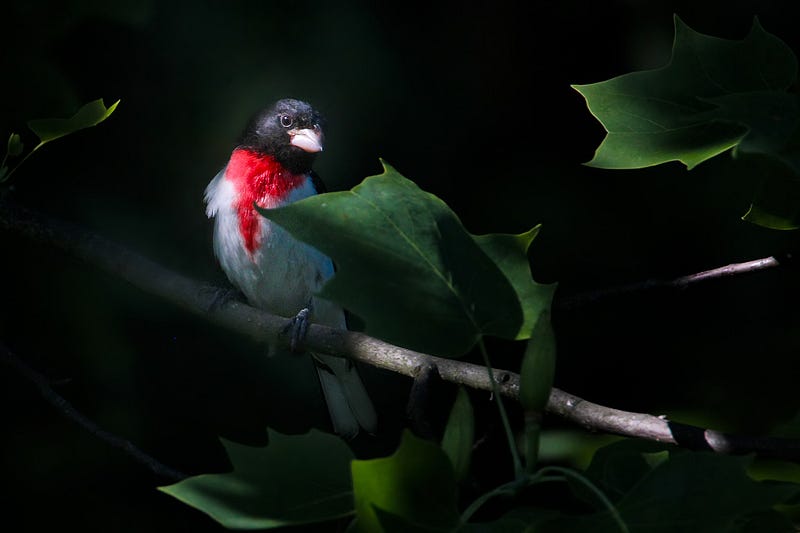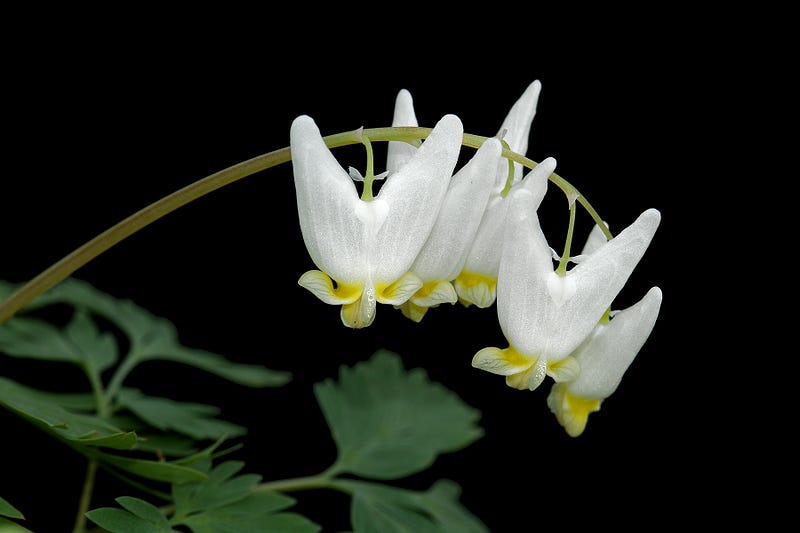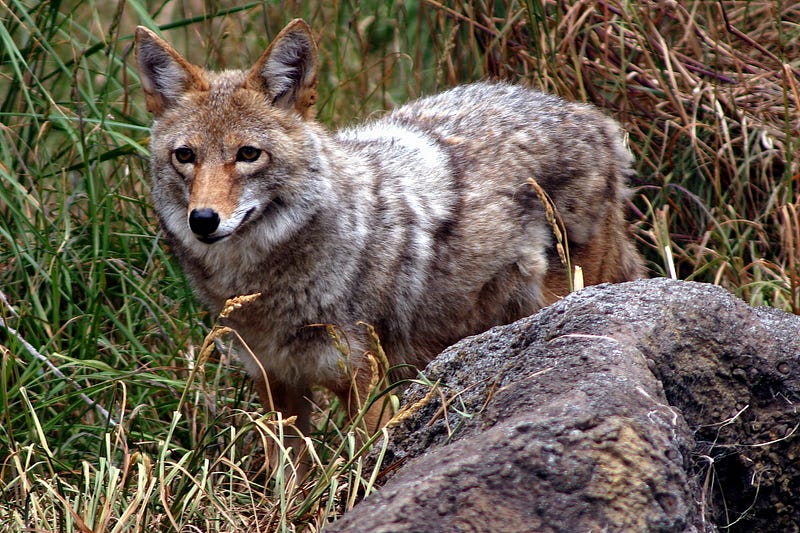A lifting musical carol awakens the forest; much like a robin, but entirely sweeter.
The brilliant black, white and red of the red-breasted grosbeak is easily identifiable and is an early-April avian arrival. This month also brings with it the rustling sounds of woodcock, killdeer and bald eagle chicks hatching from their eggs. Waterbirds, such as bitterns, herons, egrets and rails, migrating in the shelter of dark nights, arrive in increasing numbers. The final week of April and into May represents the most concentrated avian migration of the year, bringing warblers, vireos and hummingbirds.

AMPHIBIANS IN APRIL
Spring peepers, spotted salamanders, wood frogs and other amphibians that migrated to vernal pools in March have reproduced and laid their eggs. Spotted salamander eggs, having a fairly long incubation time, hatch up to seven weeks later. These, along with other species of mole salamanders, will soon become a rare sight, often retreating to moist leaf litter, under logs, or in underground tunnels until next year’s breeding season.

GROWING BELOW
Skunk cabbage, emerging in March under aquatic conditions, continues to grow upward and outward. Flying through those marshy conditions and flashing neon blue and green bodies, common green darners begin to take flight in late April. Mayapples and the ever-changing Jack-in-the-pulpit emerge. With their white to pink flowers resembling a pair of pantaloons drying on a clothesline, the rightfully named Dutchman’s breeches also bloom this month.

PREPARING FOR PUPS
Mammals shed their remaining winter coats and prepare to raise young. Many nests of squirrel families are already learning to climb, while chipmunks begin to reproduce. Beginning the delicate process of breeding in late February, coyote males, who are infertile for eight months out of the year, capitalize on their counterparts’ break in their ten-month infertile period. Come late April, a litter of six to eight pups will boisterously emerge from the family den.

The month of April brings a great number of emerging, arriving and reproducing species to the Akron area, all of which can likely be seen in your Metro Parks. Witness spring migrations and other nature happenings at one of our programs.
